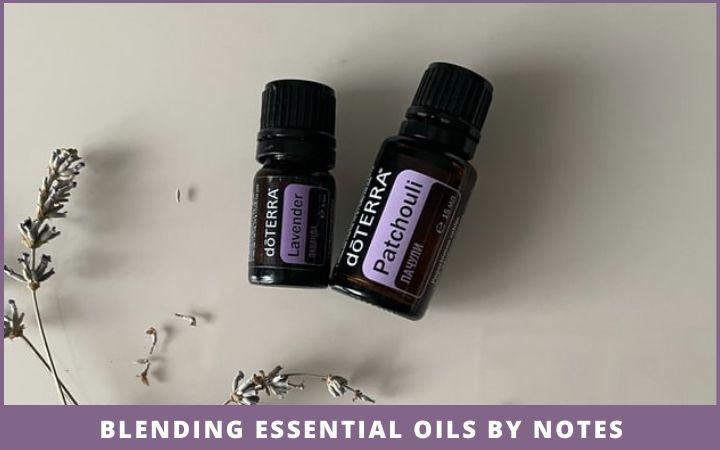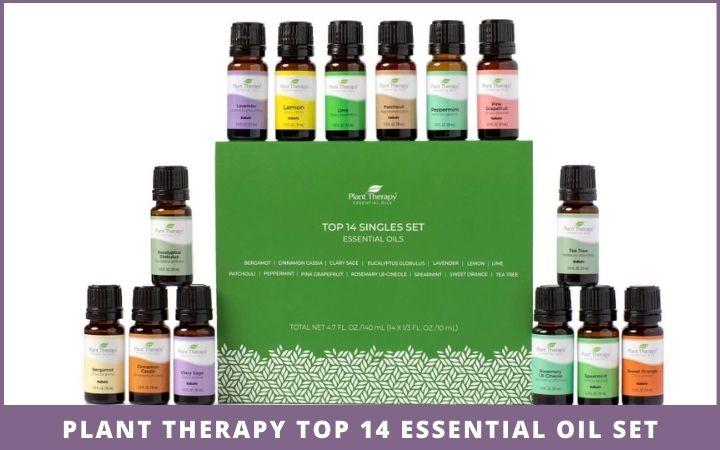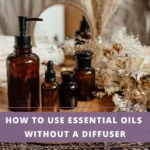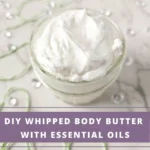As an Amazon Associate I earn from qualifying purchases. See Full Disclosure Here
Learning the art of blending essential oils is a great way to experiment with creating your own blends.
Sure, you can get some fabulous premixed blends, but creating your own unique signature aroma takes it to a whole new level! Besides creating a scent that’s uniquely you, it also allows you to develop a blend that’s tailored to your unique needs.
 Every essential oil has its own distinctive therapeutic qualities. Some are energizing, while others are relaxing, and still others may have pain-relieving properties. Using the right combination of oils will help you get the therapeutic benefits of more than one oil at a time.
Every essential oil has its own distinctive therapeutic qualities. Some are energizing, while others are relaxing, and still others may have pain-relieving properties. Using the right combination of oils will help you get the therapeutic benefits of more than one oil at a time.
Mastering the art of blending essential oils can take time, as you learn what oils complement each other and work for you and which ones don’t. But once you learn how to blend essential oils from different aroma families, the possibilities are endless.
3 Ways To Blend Essential Oils
When blending essential oils, the first thing you need to consider is your goal.
Are you blending oils to create a perfume or to get the health effects of the oil? This will guide your next steps.
If you want to create customized perfumes with essential oils, you will have to consider both – the aroma notes and the aroma scent family of the oils that you use.
If you are blending essential oils for health benefits, you will have to consider the therapeutic properties of the oils you’re working with.
Blending Essential Oils By Aroma
 The possibilities are endless when blending essential oils by their aroma. You can choose to mix two or three oils from the same aroma family, two different aroma families, or even three different aroma families.
The possibilities are endless when blending essential oils by their aroma. You can choose to mix two or three oils from the same aroma family, two different aroma families, or even three different aroma families.
This is the easiest and dare I say the most fun way to start blending for beginners. The only limitation is your personal preference.
Don’t like overly floral scents? Use an oil from the citrus aroma family to add fresh citrus notes to the scent.
Find earthy scents too strong? Adding oils from the Camphoraceous aroma family will add much-needed light notes that cut through the heavy aroma.
Want to tone down the strong citrussy scent of oils from the citrus family? A few drops of floral, herbaceous or earthy essential oils will add subtle complexity to the scent that still allows the citrus notes to shine.
Essential Oils & Their Aroma Families
Before you start creating your own blends, get acquainted with essential oil aroma families. Understanding which aroma family the oil belongs to will help you bring to life the scents that you visualize.
Essential oils fall into one of eight categories or families:
1. Citrus – Oils from the citrus aroma family have clean, refreshing, and invigorating aromas. These oils have a stimulating effect and can be good natural skin toners. Citrus oils are very versatile and mix well with other aromas. They blend best with woody and floral aromas. Citronella, grapefruit, orange, lemon, and lemongrass are all citrus essential oils. Their refreshing aroma makes essential oils from the citrus aroma family perfect for creating summer diffuser blends.
2. Floral – Floral essential oils give off a lovely floral aroma that most people find pleasantly appealing. Oils in this family are also very versatile and blend well with most other oils. The floral aroma family includes chamomile, geranium, rose, juniper, and lavender. These oils are often used in skincare and beauty products. Most floral oils are good for depression and anxiety. The pleasant aroma of essential oils from the floral aroma family makes them a great addition to blends for all seasons.
3. Herbaceous – Herbaceous essential oils have a refreshing and uplifting effect. They are known for their powerful healing properties. The herbaceous family of oils blends well with oils from most other aroma families. The herbaceous family of oils includes basil, bay, clary sage, and fennel.
4. Spicy – Oils in the spicy aroma family have warming properties. They can heal respiratory infections, arthritis, and aching muscles. Black pepper, cinnamon, clove, and ginger are all spicy essential oils. Oils from the spicy aroma family are used extensively in many fall and winter essential oil blends.
5. Woody – You guessed it, these oils from the woody aroma family are derived from trees. Oils that belong to the woody aroma family tend to have a scent that’s a little more masculine. Sandalwood, fir, cedarwood, frankincense, myrrh, and cypress are some of the oils from the woody aroma family.
6. Earthy – Oils from the early aroma family are strongly scented. They have a peaceful and calming effect on the body. Earthy aromas can help reduce high blood pressure caused by stress. Patchouli, vetiver, valerian, and Angelica root all belong to the earthy aroma family.
7. Resinous – Frankincense and Myrrh are two of the more common essential oils from the resinous aroma family. These oils are created by using the resin of trees.
8. Camphoraceous – Oils from the camphoraceous aroma family have very strong aromas. They are known to have antiseptic properties and are natural disinfectants. Camphoraceous oils include eucalyptus, peppermint, and spearmint. This aroma family of oils can all be used for sinus issues and digestive problems.
So now you know about aroma notes and aroma families of the various essential oils. When developing your own scents, your choice of oil will depend on what type of scent you are trying to create.
Blending Essential Oils By Notes
 The scent of each essential oil is split up into a category of aroma notes. Just like musical notes, aroma notes also have a top, mid, and base note.
The scent of each essential oil is split up into a category of aroma notes. Just like musical notes, aroma notes also have a top, mid, and base note.
To create a well-balanced perfume, it should ideally have a base note, a mid note, and a top note. There’s no hard and fast rule though. You can choose if you want to add all three or only two.
Top Note: A top note is the scent that we smell first. It is light and fresh and is also the first to evaporate. Top notes typically have an uplifting effect on our mood. Essential oils with top notes include:
- Bergamot
- Orange
- Lemon
- Lemongrass
- Peppermint
- Spearmint
- Eucalyptus
- Tea tree
Middle Note: A middle note is the heart of the fragrance. It lingers on for a little while longer than the top note. Middle notes are typically warm, powerful scents. Oils with middle notes are healing and relaxing and are often used to ease respiratory or muscular problems. Some middle notes may not be safe to use during pregnancy, so make sure to check each oil before using them. Essential oils with middle notes include:
- Lavender
- Chamomile
- Rose
- Geranium
- Clove
- Nutmeg
- Fennel
- Jasmine
Base Note: The base note is usually rich and heavy. It lasts the longest and holds the blend together. Base notes tend to be the more earthy and intense oils. They have a strong effect on your mind and emotions, which makes them excellent for relaxing purposes. Essential oils with base notes include:
- Cedarwood
- Sandalwood
- Patchouli
- Ylang Ylang
- Jasmine
- Frankincense
- Myrrh
Every blend should ideally have a top, middle, and base note. They can have more than one of the top, middle, or base notes, depending on the scent you are trying to create.
Blending Essential Oils By Effect
 When blending essential oils by effect, it’s most important to take time to first learn about the therapeutic properties of different oils so you mix the correct oils together. For example, blending an energizing oil with a relaxing oil may smell fabulous but you won’t get either the energizing or relaxing effects.
When blending essential oils by effect, it’s most important to take time to first learn about the therapeutic properties of different oils so you mix the correct oils together. For example, blending an energizing oil with a relaxing oil may smell fabulous but you won’t get either the energizing or relaxing effects.
Blends that are created to address specific issues are known as essential oil synergy blends. Learn more about the powerful benefits of synergy blends in aromatherapy.
I’ve put together a snapshot of some of the more popular oils and their therapeutic properties:
Relaxing:
Lavender, Roman Chamomile, Neroli, Geranium, Sandalwood, Mandarin, Melissa, Ylang Ylang, Petitgrain, Bergamot,
Energizing:
Lemon, Peppermint, Grapefruit, Cypress, Ginger, Pine, Basil, Rosemary
Aphrodisiac:
Rose, Ylang Ylang, Vanilla, Neroli, Jasmine, Sandalwood, Cinnamon
Anti-Anxiety:
Lavender, Bergamot, Roman Chamomile, Rose, Frankincense, Neroli, Lemon Balm, Tangerine, Sandalwood, Melissa
Pain Relief:
Wintergreen, Rosemary, Peppermint, Clary Sage, Clove, Eucalyptus, Black Pepper
Sleep:
Lavender, Roman Chamomile, Bergamot, Ylang Ylang, Cedarwood, Valerian root, Marjoram
Getting Started With Blending Essential Oils
 Blending essential oils can be great fun! In its simplest form, a blend is essentially a combination of 2 or more essential oil scents mixed together.
Blending essential oils can be great fun! In its simplest form, a blend is essentially a combination of 2 or more essential oil scents mixed together.
You can use any essential oil blend recipe as a starting point and then add or take away scents to customize the aroma and truly make it your own.
The trick to getting it right is to think about the scents you want to create.
Start by adding just one drop of each into a dark-colored glass bottle.
With this starting off point, you can then begin adding different quantities of other oils, one at a time, until you are happy with the resultant scent.
Once you’ve created a scent you love, add a few more drops in the same proportions to make a larger quantity of your customized perfume.
Supplies For Blending Essential Oils
I highly recommend gathering together everything that you need before starting. That advice stems from my personal experience of being excited to start and then realizing I didn’t have a dropper, which made it difficult to proceed.
Things you’ll need when blending essential oils to use in your diffuser:
– Essential oils – Buying a set of essential oils will give you a variety of oils to experiment with and it costs less than buying oils individually. This set of 14 essential oils by Plant Therapy includes a nice variety of aromas at a great price.
– Empty glass dark-colored bottles for storing your newly created blends.
– Labels and a permanent marker to label your creations. This set of labels comes with a pen for smudge-free writing on the labels and a tool for opening the bottles.
– An Essential Oil Recipe book that’s specially designed to write down the recipes of your favorite blends so you can replicate the recipes.
– Glass stirrer to mix your oils. You can use a bamboo stirrer if you have one but do definitely not a plastic stirrer.
– Towels to clean up any spills
– An old tablecloth so you don’t stain the surface underneath.
Additional things you’ll need if you are creating blends for topical applications:
– Carrier oil- You need carrier oil if you are blending essential oils for soaps, body lotions, or perfumes. My top picks – Pure Fractionated Coconut Oil and Sweet Almond Oil. Both are equally good. Which one you choose is a matter of personal preference.
– Glass measuring cup with spout – Use this to help measure out the right amount of carrier oil
– Glass or ceramic mixing bowl – Use only a glass or ceramic bowl to mix your blend in. Plastic will react with the essential oils and destroy their therapeutic properties
6 Important Blending Tips
 Creating your own essential oil blends is an exciting and creative process that allows you to tailor the scents to your personal preferences.
Creating your own essential oil blends is an exciting and creative process that allows you to tailor the scents to your personal preferences.
By following these tips and guidelines, you can craft unique and captivating blends that transport you to a tropical paradise.
1. Balance Top, Middle, and Base Notes
To create a well-rounded and harmonious tropical blend, it’s important to balance the top, middle, and base notes of the essential oils you choose.
Experiment with different combinations of oils from each category to achieve a balanced and delightful aroma.
2. Keep Notes on Successful Blends
When you stumble upon a blend that truly captivates your senses, make sure to jot it down for future reference. Keeping notes on successful blends can be invaluable as you continue to explore and create new aromas.
Note the specific oils used, the quantities, and any additional tips or adjustments you made during the process. This way, you can recreate your favorite blends or tweak them to perfection in the future.
3. Start with Small Batches
When experimenting with new blends, it’s a good idea to start with small batches. This allows you to test the aroma and make adjustments as needed without wasting a significant amount of oils.
Start with a few drops of each oil and gradually increase or decrease the amounts until you achieve the desired scent. Remember, it’s easier to add more oils than to dilute an overpowering blend.
4. Consider Seasonal Variations
You can enjoy any essential oil blend all year round, but you may want to consider seasonal variations to enhance the experience.
For example, during the hot summer months, you may lean towards lighter and more refreshing tropical scents, while in the colder seasons, you might prefer warmer and spicier tropical notes.
Adapt your blends to match the atmosphere and mood of the season.
5. Trust Your Senses
Ultimately, trust your senses and intuition when creating tropical blends. Aromatherapy is a personal and subjective experience, and what appeals to one person may differ from another.
Pay attention to how each blend makes you feel and the emotions it evokes. Let your senses guide you as you explore the wonderful world of tropical aromas.
6. Experiment with Different Oils
Last but certainly not least, don’t be afraid to get adventurous and experiment with different oils to create your perfect tropical blend.
Allow your creativity to flow and mix and match oils to find unique and captivating combinations.
Keep in mind that some oils may have stronger aromas, so adjust the quantity accordingly to achieve a well-balanced blend.
Difference Between Blending and Diluting Essential Oils
I’ve seen a lot of instances where the terms blending and diluting are used interchangeably in the context of essential oils. This is a misconception.
Both terms mean completely different things. It’s crucial to understand the differences between blending and diluting essential oils to avoid any mistakes.
Blending essential oils involves combining two essential oils to create a more intricate aroma profile. You can blend two or more essential oils from the same or different aroma families, depending on the specific aroma or effect you aim to achieve.
Diluting essential oils, on the other hand, entails mixing a few drops of essential oil with a larger quantity of carrier oil. This procedure is specifically relevant when applying essential oils topically. If you’re not using essential oils on your skin, there’s no need for dilution.
When crafting essential oil blends, the necessity for dilution arises only if you intend to apply the resulting mixture to your skin. If you plan to use your newly created blend in a diffuser, you don’t need to dilute it.
Essential Oil Blend Recipes
Remember, you can use any recipe as a starting point and tweak it to suit your preference and purpose. You don’t have to go far to look for starter recipes.
On my site, you’ll find a pretty large collection of essential oil blend recipes for different seasons and occasions. Experiment with these recipes and feel free to customize any to get the exact scent that you are looking for.
You’ll also find detailed instructions and recipes for creating customized perfume blends with essential oils.
Money-Saving TipsWhen Blending Essential Oils
Essential oils are expensive. When you start experimenting with blending essential oils, the cost can start to add up quickly if you buy individual oil bottles. The problem with this is you’ll either give up altogether or you’ll start to compromise by buying cheaper, lower-quality oils.
Instead of those dire alternatives, start by buying an essential oil set by a reputed brand. This Plant Therapy Top 14 Singles Set includes a nice variety of 14 essential oils at a decent price, which allows you to experiment without worrying about the price.
You’ll find some more options in this list of high-quality essential oil sets that offer great value for money.
Save empty essential oil bottles.
Ideally, you want to store your blends in dark-colored bottles to preserve the integrity of the oil and extend their shelf life.
Don’t throw away these bottles when you’ve finished the oil. Clean it out, dry it thoroughly, and reuse for storing your customized blends.
Stash extra supplies
Keep labels and a permanent marker on hand. Each time you mix up a new blend, you can label the bottle so that later on you’ll know what’s in it.
Buy a large carrier oil for topical use
If you’re blending essential oils to add to skincare products and perfumes, you will need to dilute it with carrier oil to avoid skin irritation.
Instead of buying small bottles, it’s cheaper to buy a large bottle of your preferred carrier oil, whether it is coconut, almond, or jojoba oil. Carrier oils do get over faster because you have to use larger quantities to dilute a drop or two of essential oil.
Read: Ultimate guide to diluting essential oils and Best carrier oils for essential oils.
To further your knowledge of blending essential oils, I highly recommend reading ‘The Complete Book of Essential Oils and Aromatherapy, Revised and Expanded’ by Valerie Ann Worwood. This book includes more than 800 Natural, Nontoxic, and Fragrant Recipes to Create Health, Beauty, and Safe Home and Work Environments. It’s a great read for anyone wanting to get the maximum benefits of aromatherapy and essential oils. I’ve reviewed the book if you want to read some more before buying.
Have you tried blending essential oils at home? Did you create your own customized blends or did you try out recipes that you came across? How did you use your homemade blends? Share your experience in the comments below 🙂
Disclaimer: This information is not intended to serve as medical advice. Please consult your doctor before using any natural medication or if you experience any unusual symptoms. See Full Disclaimer here.







